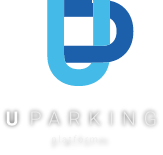


U PARKING PLATFORM
GENERAL SPECIFICATIONS OF THE SYSTEM
- Complete solution for managing all types of guests: regular, occasional, subscribers–all without use of stickers
- Integration with LPR cameras, automatic gate opening
- Registration of entries and exits, production of reports
- Allocation of quotas per account
Solution for vehicular access control during events/exhibitions - Management of access for organizers and exhibitors A solution for tenants, shared workspaces, etc.
- A solution for franchisees
EVENTS MANAGEMENT
- Adding the details of the event, start and end dates
- Adding an organizer, entering data via CSV
- Granting permissions for organizers and exhibitors
- Connection to validator/counter identification devices
- Providing different definitions according to the type of event
- Management of vehicles with a multiple entry pass as well as occasional guests
- Production of automatic reports at the end of the event
VIEWING DATA & REPORTS
- Search by vehicle numbers, names, businesses, or customers
- View current data in the system according to permissions granted
- View data in real-time from a main dashboard
- Follow up with users after utilization of quotas
- Generate reports detailing movements per vehicle (entries and exits), either by entrance/gate or by tenant/franchisee/company
- Provide a report of the event to organizers and exhibitors
- Provide a report to the NHS
REQUIREMENTS FOR LOCAL INFRASTRUCTURE
- LAN/WLAN infrastructure
- LPR cameras at the entrances of the parking lots/ramps
- Local HTS server with Access Points (supplied by the customer)
- Cloud server (supplied by the provider)